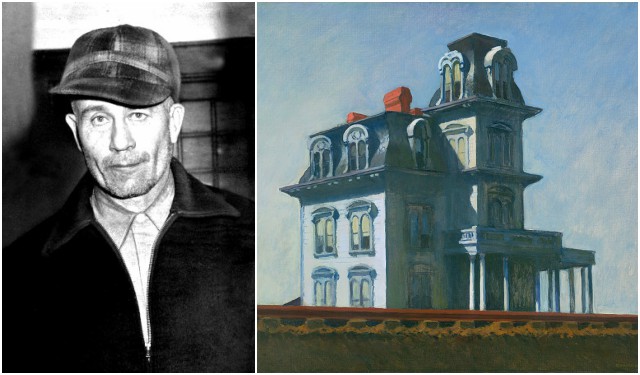Not too long, I had other things to do.
– Ed Gein replying to the question “how long did you wear the skin face masks you created from your victims.”
Ed Gein, infamously known as the ‘Butcher of Plainfield’, was a notorious killer and body snatcher. He killed two women (tavern owner Mary Hogan and a Plainfield hardware store owner, Bernice Worden) and desecrated the graves of many more in three local cemeteries during his lifetime. He used the bones and skin from the corpses to fashion them into hideous trophies which were later found by the authorities in his house.
Edward Theodore Gein was born on 27 August 1906 in La Crosse, Wisconsin, the second child of Augusta Crafter and George P. Gein. His father was a violent alcoholic often struggling to maintain a steady job and his mother, who operated a small family grocery store, was the family breadwinner. She despised her husband, but the marriage somehow persisted, mostly due to the family’s religious beliefs about divorce.
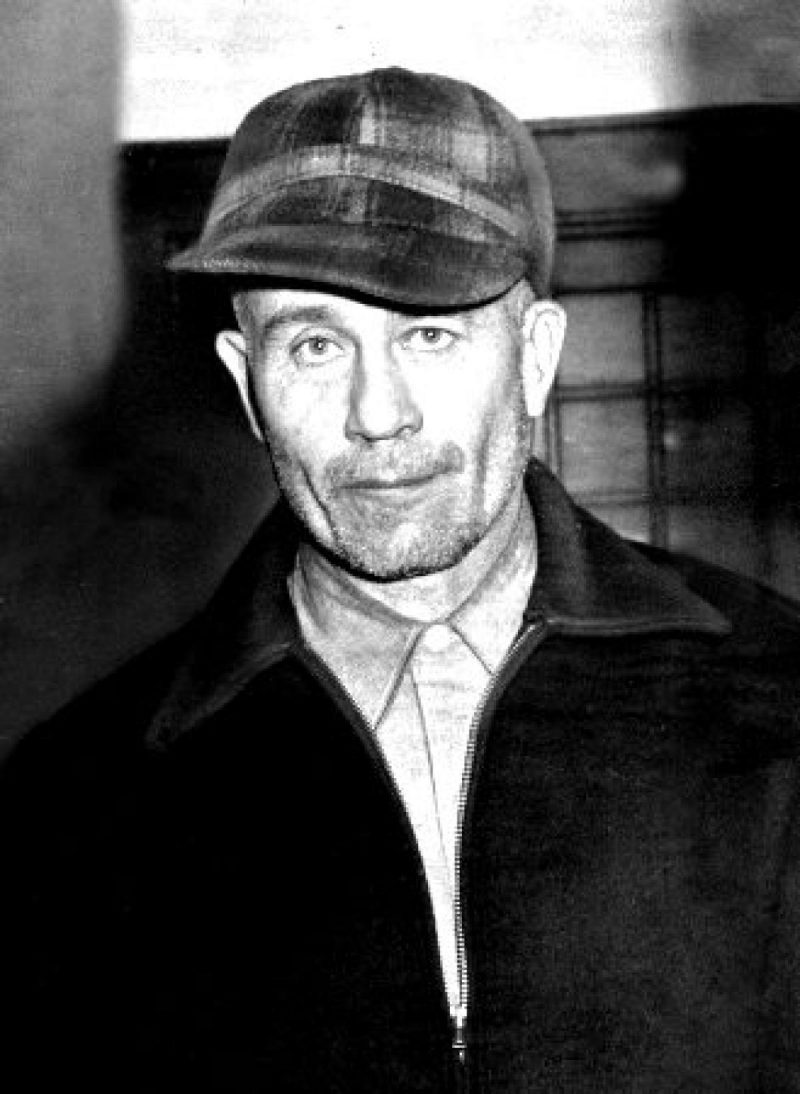
Ed was a very shy and isolated child who was often bullied at school. To make things worse, his mother punished him whenever he tried to make friends and the only friend he had was his brother Henry. Their mother often abused them and believed that the boys would become just like their father.
His father died of a heart attack in 1940, so Henry and Ed started working as local handymen to help with expenses. Henry tried to become relatively more autonomous from his mother’s influence and was concerned with the way his mother treated his younger brother Ed. However, he lost his life under strange circumstances, whilst trying to extinguish a fire near their farm in rural Wisconsin.
It was now only Ed and his abusive mother, who became even more erratic after Henry died. However, two years later, she suffered a stroke and died on 29 December 1945, leaving Ed alone in the farmhouse. As written by author Harold Schechter, he had “lost his only friend and one true love. And he was absolutely alone in the world.”

Gein sealed off a room in his home as a shrine to his mother and started reading death-cult magazines and adventure stories. He was particularly interested in the medical experiments performed on Jews in the concentration camps during World War II. Soon, he began prowling cemeteries and exhumed many recently buried bodies and fashioned trophies and keepsakes from their bones and skin. Apparently, his trophies weren’t enough to satisfy his appetite, so Gein turned from grave robbing to murder.
On 19 November 1957, Bernice Worden was reported missing. The investigation showed that Gein was the last person to see Bernice alive since he had been in the shop the night before she disappeared, so the police went to his home to speak to him.
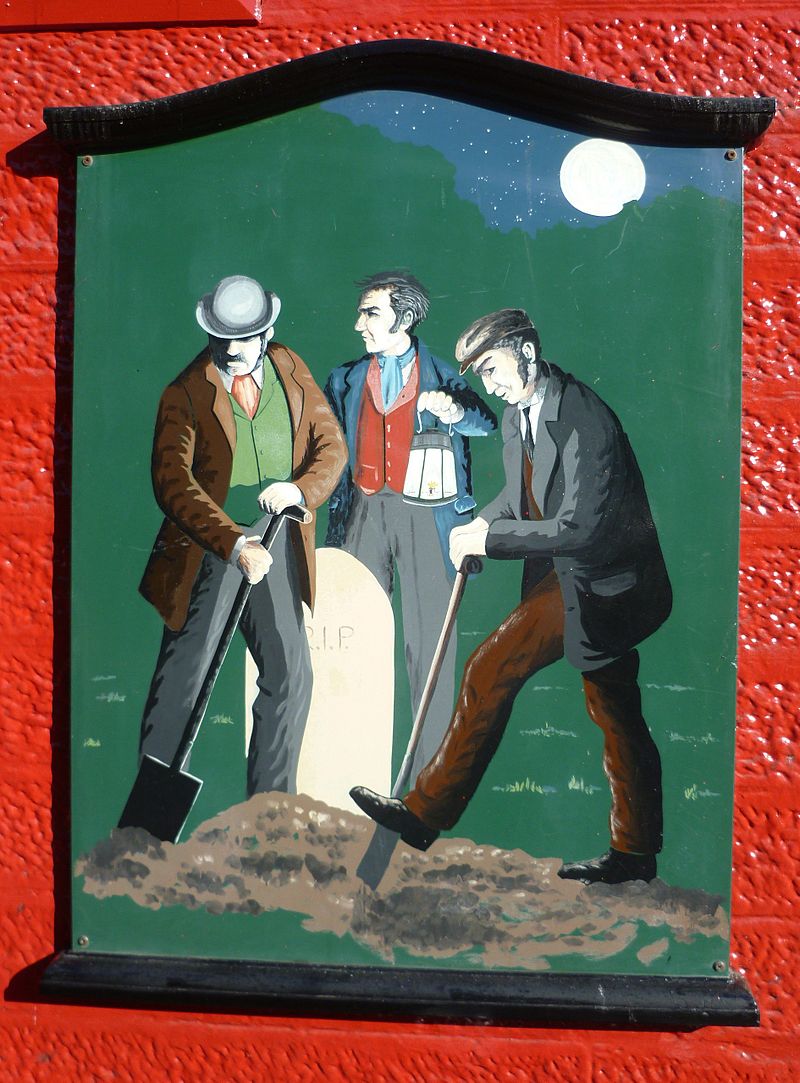
They found her decapitated body in a shed, hung upside down by a crossbar at her ankles. She had been shot at close range with a .22-caliber rifle, and what was most horrifying, her internal organs had been removed. But this wasn’t everything they found. The police also found four noses, human bones, nine masks of human skin, bowls made from human skulls, ten female heads with the tops sawed off, human skin covering several chair seats, Mary Hogan’s head in a paper bag, Bernice Worden’s head in a burlap sack, nine vulvas in a shoe box, skulls on his bedposts, organs in the refrigerator, a pair of lips on a draw string for a window shade, a belt made from human female nipples, and a lampshade made from the skin of a human face.
Gein was found to be mentally incompetent, and therefore unfit to stand trial, so he was sent to the Central State hospital for the Criminally Insane and later transferred to the Mendota State Hospital in Wisconsin.
He was declared fit to stand trial ten years later and he was found guilty of first-degree murder but since he was legally insane he was sent back to a mental facility.
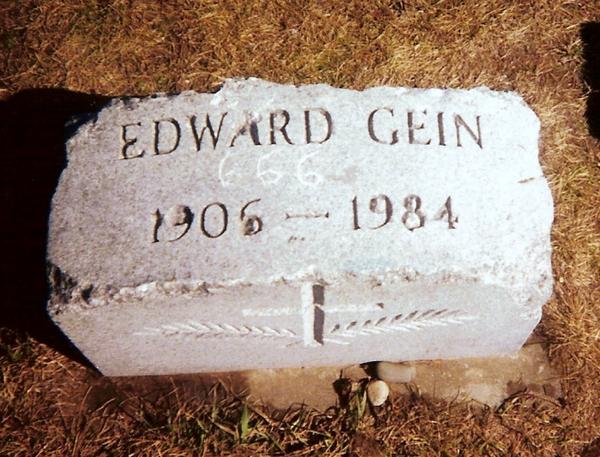
Gein’s crimes shocked and fascinated America at the same time. His horrific actions were beyond belief, but they have certainly been a blessing to film-makers. The infamous grave robber and murderer inspired or at least influenced the nature of characters such as Norman Bates (Psycho), Leatherface (The Texas Chainsaw Massacre) and Buffalo Bill (The Silence of the Lambs).
Gein provided inspiration for the character of the serial killer, Buffalo Bill in The Silence of the Lambs. Buffalo Bill’s main targets were women, and he murdered them with the intention to use their skin to make a “woman suit” for himself. The character was based on several serial killers and one of them was the notorious killer and body snatcher, Ed Gein, whose actions were obviously an inspiration for the “woman suit.”

Gein didn’t have a chainsaw and both his victims, Mary Hogan and Bernice Worden, were shot with a pistol. However, he was the real-life Leatherface and a key inspiration for Tobe Hooper’s The Texas Chain Saw Massacre.
Screenwriters Kim Henkel and Tobe Hooper incorporated elements of Gein’s story and personality into the script. Leatherface wears a human’s face as a mask just like Ed Gein.
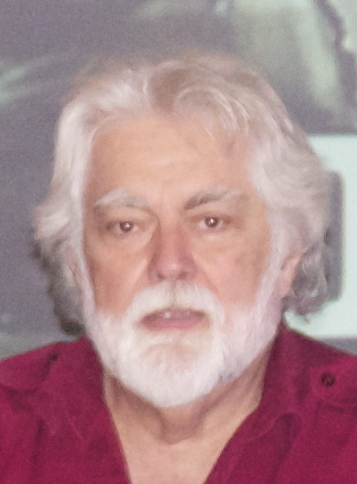
No introduction is needed for Alfred Hitchcock’s masterpiece Psycho, based on a 1959 novel by Robert Bloch. When Hitchcock read a review of Bloch’s book he was hooked and immediately acquired the rights to Psycho. The iconic horror movie that was released nearly 60 years ago still scares the pants off audiences worldwide.
It is hard to imagine that such a person like Norman Bates actually existed in real life, but apparently Ed Gein served as an inspiration. Both Normal Bates, the film’s murderer, and Ed Gein suffered severe emotional abuse at the hands of their mothers and started killing after their mothers died.

Both of them liked to dress in women’s clothes and they sealed off a room in their homes as a shrine to their mothers.
However, while Norman Bates is clearly a psychotic character, Ed Gein is a real life psychopath. Gein is not considered a serial killer because he only committed two murders, but his reputation is so infamous that he is seen as one.
